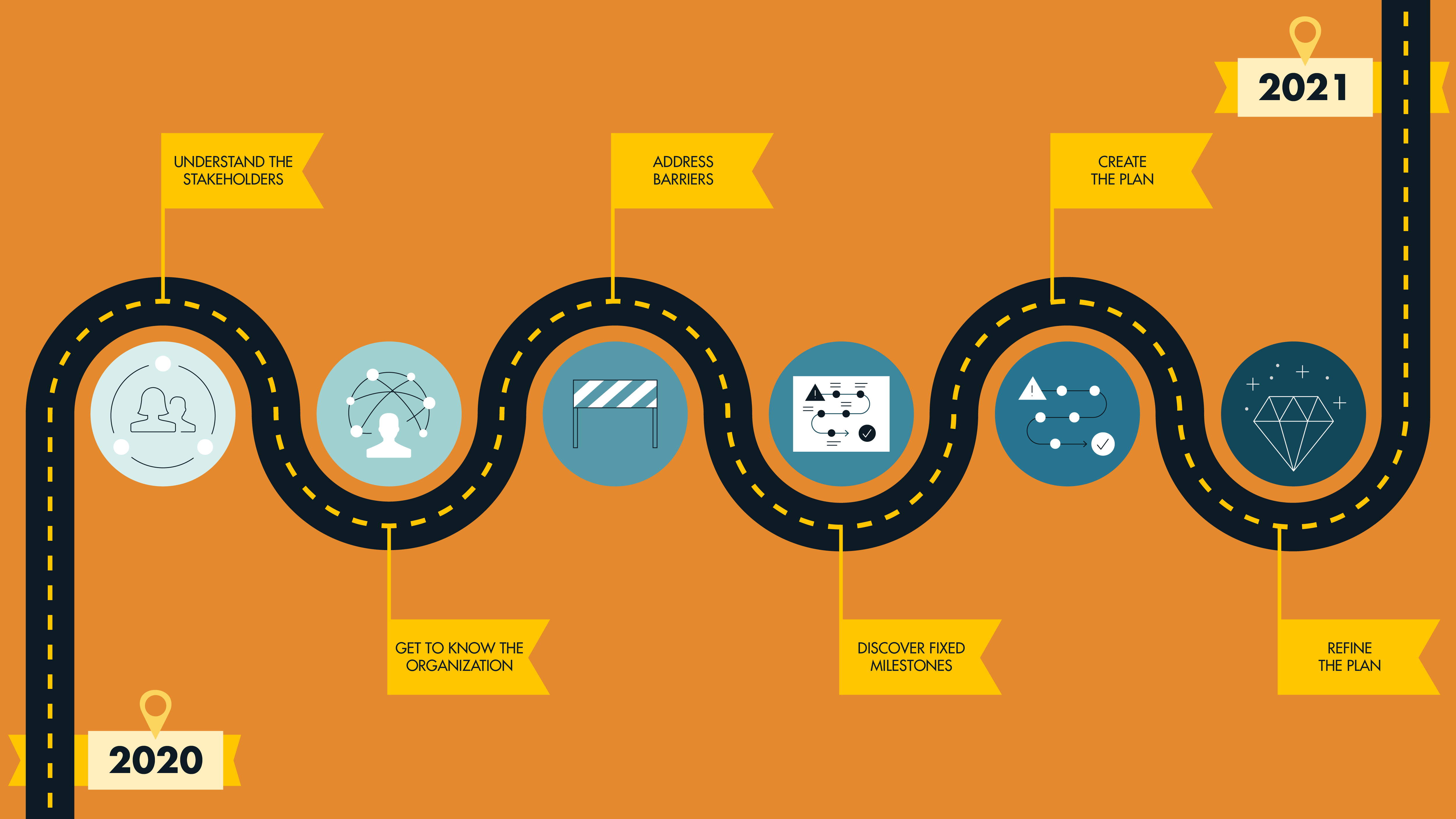What drives retention, referrals, and profitability and accelerates growth? Customer centricity, the classic overachiever. With all these benefits, it’s no surprise implementing a world-class CX strategy requires a holistic organizational transformation. Here’s a bird’s eye view of what it takes to build a thriving customer-centric organization.
There’s a lot of conversation these days about customer centricity, and for good reason.
Companies moving fastest to organize their business around customers are already tomorrow’s leaders. They are building better relationships and more tailored offerings with their customers. They’re also driving referrals and retention, increasing profitability and top-line growth at a pace laggards won’t be able to follow.
According to McKinsey, improving a customer experience from average to exceptional can lead to a 30% to 50% increase in KPIs such as likelihood to renew or purchase another product. And Fred Reichheld of Bain & Company has shown that as little as a 5% increase in retention rate will raise profits by 25% to 95%.
What other strategy yields returns of that magnitude?
Customer Centricity Starts at the Top
The problem is this: Customer centricity is a C-suite issue. It requires a complete rethinking of your entire business.
You can’t become a customer-centric organization just by changing your processes. Customer centricity is a systemic approach that requires designing your business around the discovery, anticipation, and fulfillment of your customer’s needs.
As such, it requires a total redesign of all the elements of your organization—not only your people, processes, and tools but also your mindset, behaviors, and cultural norms.
What Does Customer Centricity Look Like?
In our work with global organizations undergoing customer-centric transformation, we’ve identified five key elements that describe a customer-centric organization, as well as seven characteristics of a customer-centric strategy.
Together, these elements help shape a roadmap for the customer centricity journey by making clear the destination, as well as providing a strategy to get there.
Five Elements of a Customer-Centric Organization
First, it’s critical to understand what the destination looks like. You won’t know you’ve arrived unless you have a clear view of the outcomes the change will create for your customer.
Here are five signs that an organization is truly customer-centric:
- You serve your customer’s needs, not just their stated wants.
- You anticipate opportunities to better serve your customer, not just react.
- Your customers’ experience of working with you is simple and frictionless.
- Your solutions are co-created with customers: products and services are developed, iterated, and refined rapidly with customer feedback.
- Your employees think like your customers; they use empathy and direct experience to “walk in their shoes.”
Seven Characteristics of a Customer-Centric Strategy
With these outcomes in mind, the best customer-centricity strategies contain the following seven characteristics:
- They consider the whole spectrum of the customer lifecycle, especially that which you don’t see.
- They encompass the entire expanse of the business; every dimension of the organization—from culture to technology, to tools and processes—is aligned.
- They measure customer experience (CX) as a primary key performance indicator (KPI).
- They embed a CX mindset within your culture and its behaviors.
- They equip and empower employees to make customer-centric decisions at every touchpoint.
- Feedback loops and a process to follow up on insights are built everywhere.
- Strategies, workstreams, and initiatives are shaped through a CX lens.
Balance is Key During Customer Centricity Transformation
Lisa Schwartz, Senior Vice President and Chief Business Officer of Mathematica—a firm specializing in evidence generation, analysis and application—has observed the importance of balancing changes in every area of the business as she helped to lead her organization through a CX transformation.
“We quickly discovered that each and every person who works at Mathematica has an important role to play in becoming more client centered,” says Lisa, “Because this type of organizational transformation impacts everything from mindset and culture, to systems and processes, staff at all levels must be represented in the process, so that ultimately, our clients can see the change reflected in everything we do.”
That experience of who “you” are as a company is the sum total of every touchpoint and interaction between your organization and your customer, every day.
As such, it’s incumbent upon leaders to escalate the customer centricity mission to the most strategic levels of the enterprise—it’s the fastest path to delighting your customers, your employees, and ultimately your investors, as you build long-term, sustainable relationships with those you serve.
Additional Resources
Learn how to start activating a customer-centered mindset inside your company. Watch the recording of our latest webinar and hear firsthand how Mathematica made customer-centricity a strategic priority to achieve industry-leading customer satisfaction scores.
Or if you’re short on time, read our blog post that recaps the aforementioned webinar, Five Steps to Transforming the Customer Experience and Accelerating Growth.

Three Ways to Banish Initiative Fatigue and Lead Change
Feeling like you just can’t get a new idea off the ground or are talking in circles about a great new initiative without making any real progress? Take heart. With a small stash of visual thinking techniques and a few handy tips up your sleeve, you can get traction and move ahead.

How to Design a Strategy Execution Plan
Q: I’ve invested a lot of time and resources to create an exciting new strategy for my organization. How do I bring my vision to life?
A: You design a strategy execution plan to pave the way and get people onboard. Six steps and a few tips and tools are all it takes.

The Unexpected Magic of Virtual Offsites
Needing to tackle a mission-critical strategy, visioning, or team-building initiative but can’t swing an in-person meeting? Welcome to the world of the virtual offsite! Flexible and budget-friendly, these gems of our new era of work will get your team revved up to solve problems and innovate in exciting new ways.
